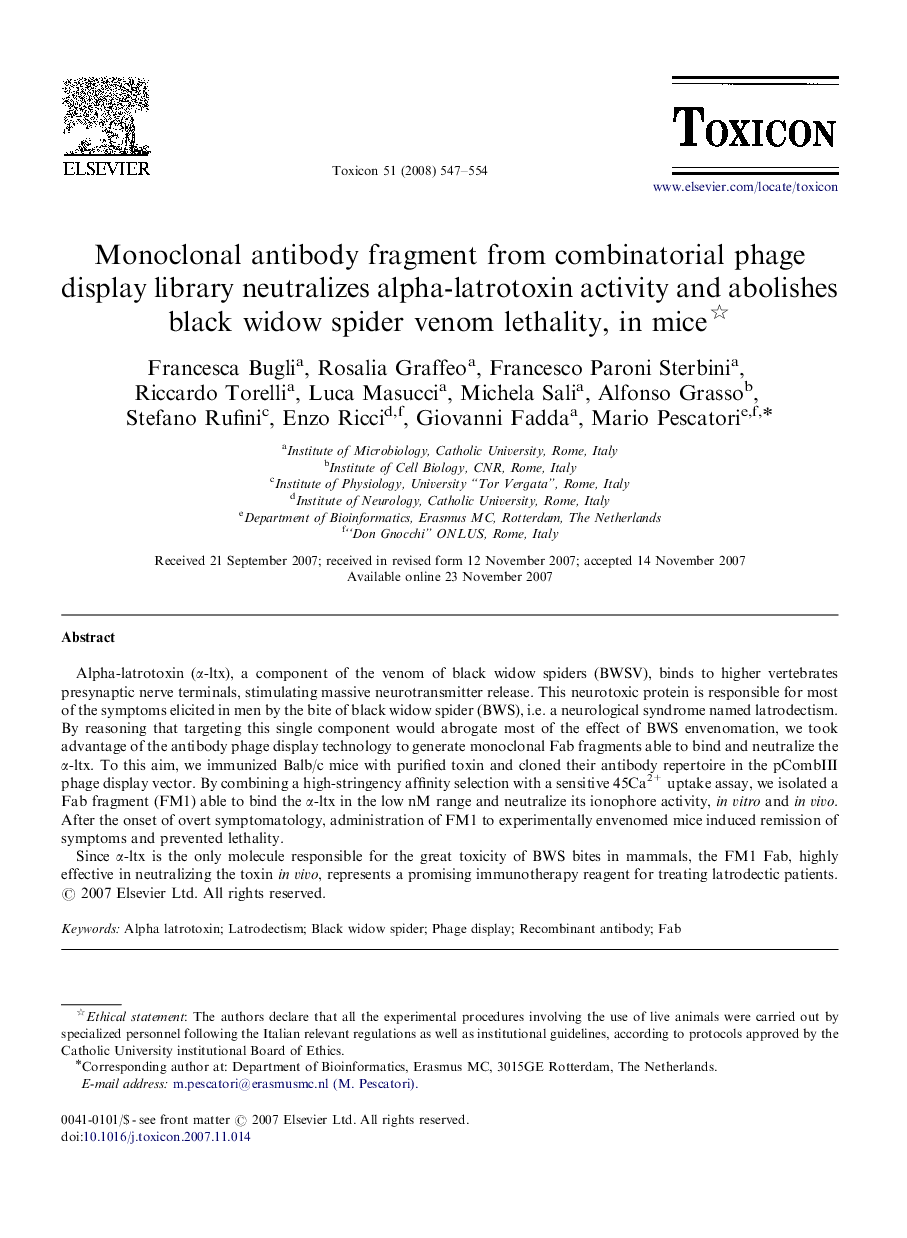| Article ID | Journal | Published Year | Pages | File Type |
|---|---|---|---|---|
| 2065853 | Toxicon | 2008 | 8 Pages |
Alpha-latrotoxin (α-ltx), a component of the venom of black widow spiders (BWSV), binds to higher vertebrates presynaptic nerve terminals, stimulating massive neurotransmitter release. This neurotoxic protein is responsible for most of the symptoms elicited in men by the bite of black widow spider (BWS), i.e. a neurological syndrome named latrodectism. By reasoning that targeting this single component would abrogate most of the effect of BWS envenomation, we took advantage of the antibody phage display technology to generate monoclonal Fab fragments able to bind and neutralize the α-ltx. To this aim, we immunized Balb/c mice with purified toxin and cloned their antibody repertoire in the pCombIII phage display vector. By combining a high-stringency affinity selection with a sensitive 45Ca2+ uptake assay, we isolated a Fab fragment (FM1) able to bind the α-ltx in the low nM range and neutralize its ionophore activity, in vitro and in vivo. After the onset of overt symptomatology, administration of FM1 to experimentally envenomed mice induced remission of symptoms and prevented lethality.Since α-ltx is the only molecule responsible for the great toxicity of BWS bites in mammals, the FM1 Fab, highly effective in neutralizing the toxin in vivo, represents a promising immunotherapy reagent for treating latrodectic patients.
